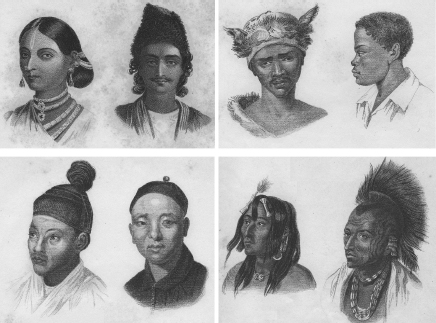
Our current efforts to understand the human genome include a focus on the genetic similarities and differences among various ethnic groups. The International HapMap Project has initially generated detailed genotype information on 270 individuals from four groups with diverse geographic ancestry: the Yoruba from Ibadan, Nigeria; Utah residents of Northern and Western European ancestry; Han Chinese in Beijing; and Japanese in Tokyo. In past centuries there have been many attempts to understand the bases of phenotypic differences among humans. Baron Georges Cuvier (1769–1832) attempted a systematic classification of animals, describing four great divisions of the animal kingdom: vertebrate animals, molluscous animals, articulate animals, and radiate animals (also called Zoophytes). His work included a classification of humans based on anatomical differences. These images are from The Animal Kingdom, Arranged According to Its Organization by Cuvier (1849, plates I–IV) and depict varieties of human races.
19
![]()
Human Genome
INTRODUCTION
The human genome is the complete set of DNA in Homo sapiens. This DNA encodes the proteins and other products that define our cells and ultimately define who we are as biological entities. Through the genomic DNA, protein-coding genes are expressed that form ...
Get Bioinformatics and Functional Genomics, Second Edition now with the O’Reilly learning platform.
O’Reilly members experience books, live events, courses curated by job role, and more from O’Reilly and nearly 200 top publishers.

